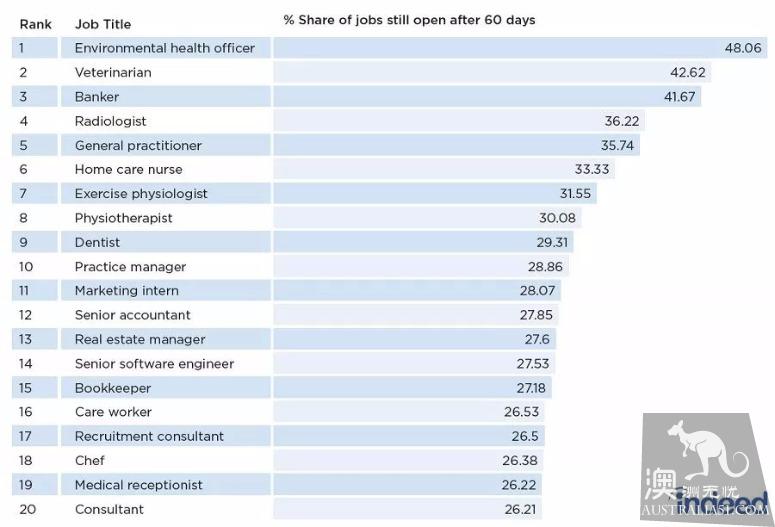To our impression, Australian medicine-related industries seem to have been understaffed, and they account for a significant quota on the immigration profession list. However, the Australian health authorities have repeatedly called for the removal of a large number of medical professions. Why?
Now that the review of the STSOL inventory has entered a critical period, a new version is due to begin next month. Although this is not about the MLTSSL list, the Australian Ministry of Health also took advantage of this time, again calling on the Immigration Board to remove a number of medical professions, this time bear the brunt of the emergency medical specialist (253912 Emergency Medicine Specialists).)
Oversupply affects local employment
Emergency medical specialists are still on the current MLTSSL list, belonging to the 2539 category, with a total quota of 1000 for the current fiscal year. By October 18, 2017, 115 had been used, compared with 896 for fiscal year 2016 / 17, when 1315 quotas were used.

It is estimated that by 2030, there will be an excess of 2328 emergency medical specialists, more than 102% of the required number! The Ministry of Health is concerned about this.
The Australian College of Emergency Medicine, (The Australasian College for Emergency Medicine), is considering reducing the number of trainers, but even if enrolment drops 19% a year now, there will still be 60% surplus by 2030.
The professional situation of doctors is serious
In fact, emergency medical specialists are not the only medical professions to be named.
As early as reviewing the list of occupations for fiscal year 2016 / 17, the Health Department of Australia proposed restricting immigration of overseas doctors and recommending the removal of as many as 41 medical professions, including general practitioners, surgeons and anesthesiologists. However, it was not accepted by the Immigration Service, and only four dental-related occupations were removed in the end.
The Ministry of Health believes that with the expansion of university enrollment and training, there is no longer a shortage of doctors in Australia. It would be difficult for locals to find a job if they continue to accept migrants on the current scale.

The Australian population Institute, in a new report, also supported the Department of Health's view and expressed displeasure at the government's failure to remove medical occupations from the list of occupations. The institute should be familiar with its negative attitude towards immigrants and has repeatedly called for reforms to Australia's skilled immigration programs to provide more opportunities for Australian citizens and permanent residents.
Actual employment data hit the face
Australia's job market has been growing well in recent years, with 70 percent of jobs hiring the right people within a month, according to Indeed. The current number of employed people is twelve million two hundred and ninety seven thousand one hundred, reaching an all-time high. Employment has increased every month over the past 13 months, the longest consecutive period of growth since July 1994.
However, the shortage of skilled workers in some industries is still obvious, among which the health care industry is the most prominent. According to Indeed, radiologists, dentists, physiotherapists, home nurses, nursing workers, medical receptionists, etc., are struggling to find the right person in a short time.

The Ministry of Health has recommended removing a general practitioner who is ranked fifth on the list, earning an average of A $256680 a year, but still not attracting enough talent. Demand is now 12 times the supply!
Chris McDonald, general manager of Indeed Australia, said Australia's latest GDP data showed healthcare was one of the more prosperous sectors. This is not surprising because the baby boomers are getting old and naturally need more people to take care of them.
According to the latest figures from the Australian Bureau of Statistics, there is a huge demand for people in the healthcare sector in both the past five years and the next five years.
These careers have a bright future.
While the Ministry of Health wants to cut medical occupations significantly, it recommends retaining some of them, such as nurses and some specialists, which is consistent with the Indeed data.
The Ministry of Health expects Australia's nurse gap to reach 85000 by 2025 and 123000 by 2030.
The Ministry of Health says past incoordination has led to cyclical ups and downs in medical training, and the number of doctors has been affected. However, the number of nurses has always been short, so it is recommended to keep all nursing occupations on the occupational list.
In addition, Ministry of Health spokesman Sussan Ley said the medical industry has a wide range of specialists, and although the total may be oversupplied, demand has been increasing in areas such as geriatrics, psychiatry and hospice care.
At the same time, the Ministry of Health also called for doctors to go to rural and remote areas to meet the medical needs. And the government has always been supportive of development in remote areas, so even if doctors do experience a cold winter, there may still be some opportunities in remote areas.
epilogue
The April 457 reform has had little impact on medical occupations. Only anesthesiologists and psychotherapists were removed from the MLTSSL list of skilled immigrants in FY17 / 18, and medical occupations are not currently marked in the review of the STSOL list.
Judging from the current situation, the Immigration Service does not seem to have any intention of curtailing the profession of doctors. However, the Ministry of Health for years to speak for this, always let people have a little heart unsteadfast.
If you are worried that your major will be less likely to emigrate, consider moving to other relevant professions early, such as the above-mentioned nursing and some specialist professions, whether in government agencies or private companies. The prospect of emigration has always been good.

